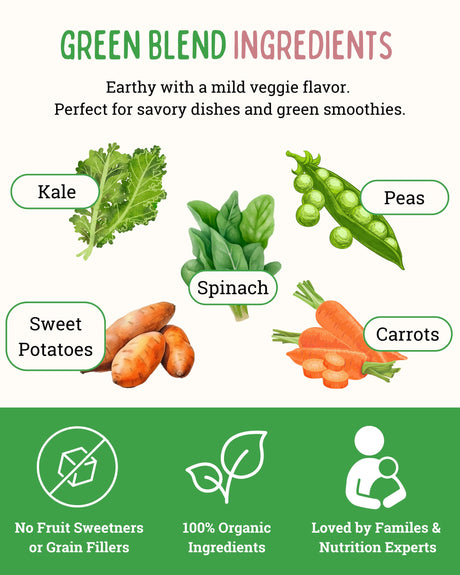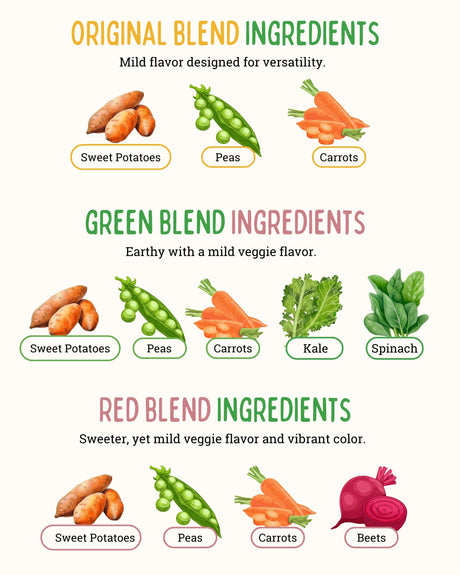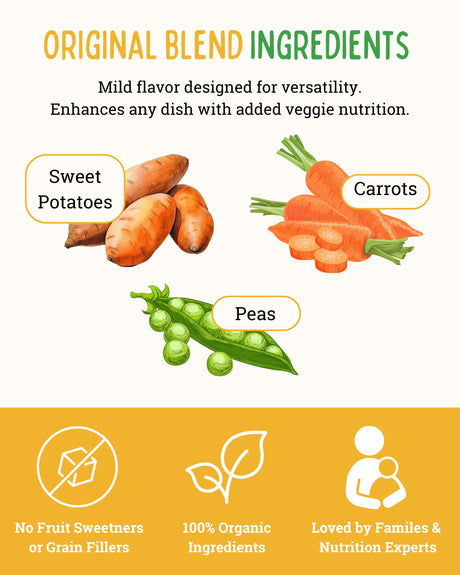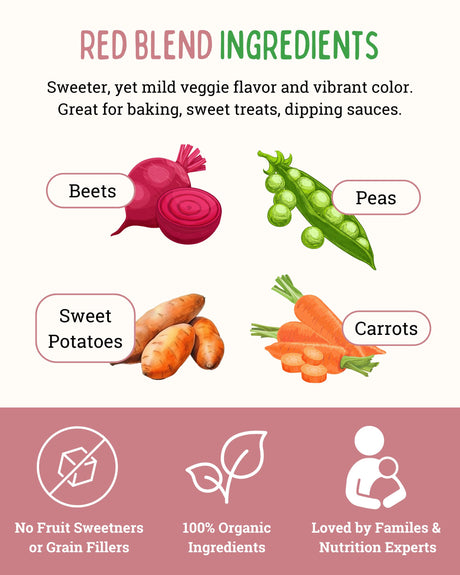Disclaimer: This article is for educational purposes only and does not constitute medical advice. Always consult with your child's healthcare provider for concerns about eating patterns, growth, or development.
You've been there, haven't you? Standing in your kitchen, watching your child reject yet another meal, and wondering if this is "normal" picky eating or something more serious. Maybe your pediatrician has mentioned something called ARFID, or perhaps you've been Googling at 2 AM (we've all been there) and stumbled across this mysterious acronym.
Here's the truth: the line between typical picky eating and ARFID isn't always crystal clear, but understanding the difference can help families know when to seek additional support.
If you've been questioning whether your child's eating patterns are beyond the usual toddler food battles, this guide will help you navigate these sometimes murky waters with compassion, clarity, and hope.
What is ARFID? The Basics Every Parent Should Know
ARFID Explained in Simple Terms
ARFID stands for Avoidant/Restrictive Food Intake Disorder. Think of it as picky eating's more intense cousin – one that may significantly impact a child's health, growth, or daily functioning.
Unlike typical picky eating, which is often a phase that kids grow out of, ARFID is a recognized eating disorder that typically requires professional support. It's not about being "difficult" or "stubborn" – it's a real condition that affects how some children experience food.
The important thing to remember? ARFID isn't anyone's fault. Not yours as a parent, and certainly not your child's. It's simply how some children's systems respond to food experiences.
Why Understanding ARFID Matters
ARFID was officially recognized as an eating disorder in 2013, which means we're still learning about it. But here's what we do know: it appears to be more common than many people realize, especially among children with autism, ADHD, sensory processing differences, and anxiety.
Understanding these differences isn't just about getting the right diagnosis – it's about getting the right support for your family and ending the cycle of guilt, frustration, and mealtime battles.
Typical Picky Eating: What's Normal and What to Expect
The Classic Picky Eater Profile
Most children go through picky eating phases, usually between ages 2 and 6. These little food critics might:
- Refuse vegetables (shocking, we know!)
- Want the same foods prepared the exact same way every time
- Have strong opinions about food touching on their plate
- Go through phases of loving and then rejecting certain foods
- Eat a limited variety but still grow and develop typically

Here's what many families observe: typical picky eaters usually have enough accepted foods to meet their basic needs, even if it doesn't look like the balanced diet you had in mind.
The Toddler Food Rebellion
Remember when your sweet baby ate everything you offered? Then suddenly, around age 2, they became a tiny food dictator with very strong opinions about everything.
This transformation is actually developmentally typical. Toddlers are asserting their independence, and food is one area where they have control. It's frustrating, but it's also often a sign of healthy development.
Most kids in this phase will:
- Continue growing appropriately
- Have at least 10-15 accepted foods
- Eventually show interest in new foods (research suggests this can take 8-15 exposures)
- Participate in family meals, even if they don't eat everything
When Picky Eating Appears to be a Phase
Typical picky eating often has these characteristics:
Some Flexibility: Your child might only eat chicken nuggets, but they'll eat different brands or shapes.
Growth Continues: Despite your worries, your child appears to be growing appropriately and has energy for play and learning.
Social Eating is Manageable: They might not eat much at birthday parties, but they can participate without major distress.
Gradual Changes: You might see tiny improvements over time, even if it's slower than you'd like.
ARFID: When Eating Becomes a Bigger Concern
The ARFID Experience
ARFID typically goes beyond usual pickiness. Children with ARFID often have such severe food restrictions that their health, growth, or ability to function may be affected.
Unlike typical picky eaters who might have 15-20 accepted foods, children with ARFID might have only 5-10 "safe" foods. Sometimes even fewer.
The restriction often isn't just about taste preferences. It frequently involves intense sensory reactions, fears around eating, or other factors that make eating genuinely distressing.
Signs That May Suggest ARFID
Severe Food Limitation: Your child eats fewer than 10 foods total, or their accepted foods are decreasing over time.
Growth Concerns: Your pediatrician has expressed concern about your child's growth pattern or weight.
Possible Nutritional Issues: Your child shows signs that might suggest nutritional gaps, like fatigue or frequent illness.
Extreme Sensory Reactions: Your child gags, vomits, or has panic-like reactions to certain food textures, smells, or appearances.
Social Impact: Your child struggles to participate in normal social activities involving food, or family life revolves entirely around their eating restrictions.
Need for Nutritional Support: Your child may require supplemental nutrition.
The Sensory Side of ARFID
Many children with ARFID have intense sensory experiences around food. For them, certain textures might feel overwhelming, specific smells might be extremely unpleasant, or even the appearance of certain foods can trigger distress.
This isn't being "dramatic" – their sensory system appears to process these experiences differently. What seems like a minor texture difference to you might feel overwhelming to their nervous system.
Key Differences: Side-by-Side Comparison
Number of Accepted Foods
Typical Picky Eating: Usually 15-30 accepted foods across different food groups ARFID: Often fewer than 10 foods, sometimes only 3-5
Impact on Growth and Health
Typical Picky Eating: Growth typically continues normally despite limited variety ARFID: May show concerning changes in weight, growth, or signs of nutritional gaps
Flexibility
Typical Picky Eating: Can usually accept some variations (different brands, slight preparation changes) ARFID: Often requires exact preparation, specific brands, or precise conditions
Social Impact
Typical Picky Eating: Can usually participate in social eating situations, even if they don't eat much ARFID: Social situations involving food often become difficult or impossible
Response to New Foods
Typical Picky Eating: May refuse but can usually tolerate new foods on their plate ARFID: May have extreme reactions (gagging, vomiting, panic) to unfamiliar foods
Duration and Progression
Typical Picky Eating: Often improves over time with patience and exposure ARFID: Tends to persist or worsen without professional intervention
When Sensory Issues Complicate the Picture
Understanding Sensory Processing Differences
Many children with ARFID also have sensory processing differences. This means their nervous system may process touch, taste, smell, and texture information differently than typical children.
For these kids, certain food textures might feel genuinely overwhelming. The smell of cooking food might be extremely unpleasant. Even the appearance of mixed foods might trigger their anxiety.
This typically isn't willful behavior – it's how their nervous system appears to be wired.
Common Sensory Patterns
Texture Sensitivity: Can only eat smooth foods or only crunchy foods, with no in-between.
Temperature Requirements: Foods must be served at very specific temperatures.
Visual Needs: Foods can't touch, must be served on specific plates, or can't have visible seasonings.
Smell Sensitivity: Strong reactions to cooking smells or food odors.
Oral Motor Challenges: Difficulty chewing certain textures or managing mixed textures.

The Emotional Toll on Families
When Every Meal Feels Like a Battle
Living with significant feeding challenges affects the whole family. Parents often report feeling exhausted, worried, and isolated. Siblings might feel overlooked or frustrated by the attention their brother or sister's eating requires.
The constant concern about nutrition, growth, and social participation can be overwhelming. Many families find themselves planning their entire lives around their child's eating needs.
This emotional toll is real and valid. Caring for a child with complex feeding needs is intense work that requires support and understanding.
Moving Beyond Blame
One of the most damaging myths about feeding difficulties is that they're caused by "permissive parenting" or "giving in too much." This simply isn't accurate.
Significant feeding challenges appear to have multiple contributing factors, and loving, skilled parents can absolutely have children with feeding difficulties. Sometimes the most structured, consistent approaches may not work for these kids.
Understanding this can help families move from blame and guilt toward getting appropriate help and support.
Getting Professional Help: Where to Start
When to Seek Evaluation
If your child's eating patterns are significantly impacting their health, growth, or your family's quality of life, consider seeking professional help.
Start with your pediatrician, who can assess growth, rule out underlying issues, and provide referrals to specialists.
Don't wait for things to get "worse." Early intervention often leads to better outcomes.
The ARFID Support Team
- Pediatrician: Monitors growth, nutrition, and overall health
- Feeding Therapist (OT or SLP): Works on feeding skills and sensory issues
- Mental Health Professional: Addresses anxiety or other emotional factors
- Registered Dietitian: Helps ensure nutritional needs are met and assists with meal planning
- Gastroenterologist: Rules out or addresses digestive issues (if needed)

What to Expect from Treatment
ARFID treatment is usually a slow, gradual process. The goal typically isn't to force eating, but to help your child's system become more comfortable with food experiences.
Treatment might include:
- Sensory activities
- Anxiety reduction techniques
- Gradual food exposure
- Nutritional support
- Family education and support
Progress is often measured in tiny steps, not dramatic changes. Touching a new food might be significant progress. Sitting at the table without distress can be meaningful improvement.
How Easy Peasie Can Support Families
A Gentle Bridge to Nutrition
For families dealing with feeding challenges, Easy Peasie can provide helpful nutritional support during the journey. When your child has only a few accepted foods, our veggie blends can help ensure they're getting important nutrients.
Our Original Blend, with its mild flavor and smooth texture, often works well for children with sensory sensitivities. It can be mixed into accepted foods without dramatically changing their appearance or texture.
Supporting the Process
Easy Peasie isn't a solution for feeding disorders, but it can be a valuable tool in your support toolkit.
For many families, Easy Peasie provides peace of mind during difficult phases. Knowing your child is getting real vegetable nutrition, even if they're eating a limited variety, can reduce stress for everyone.
Our veggie powder blends aren't magic solutions, but they can be part of a comprehensive approach to supporting your child's nutrition and your family's well-being. They can help bridge the gap between your child's current eating and their nutritional needs, potentially reducing anxiety for both parents and children.
Working with Your Support Team
If your child is receiving feeding therapy, discuss incorporating Easy Peasie with your team. Many feeding therapists are familiar with nutritional supplements during treatment to reduce pressure on families while working on food expansion.
The goal is always to support your child's journey toward expanded eating, not to replace the important work of feeding therapy.
Supporting Your Child Through the Journey
Creating a Positive Food Environment
Whether your child has typical picky eating or more complex feeding challenges, creating positive food experiences is important. This means:
Reducing Pressure: Avoid battles, bribes, or forcing. These approaches often backfire with sensitive eaters.
Maintaining Routine: Regular meal and snack times help children feel secure.
Staying Calm: Your child picks up on your anxiety around food. The calmer you can stay, the more relaxed they'll be.
Celebrating Small Progress: Sitting at the table, touching a new food, or even just looking at something new can be meaningful.
Building Food Curiosity
For all children, curiosity about food develops slowly and safely. You can encourage this by:
Playing with Food: Let your child touch, smell, and explore foods without pressure to eat them.
Cooking Together: Many children show more interest in foods they help prepare.
Reading Food Books: Stories about food can make new items feel more familiar.
Modeling Enjoyment: Let your child see you enjoying a variety of foods, but don't pressure them to copy you.
Finding Hope and Moving Forward
The Long View
Whether your child has typical picky eating or more complex feeding challenges, remember that eating development happens over years, not weeks or months. The goal isn't perfect nutrition at every meal, but gradual progress toward a healthier relationship with food.
Many children with feeding difficulties do expand their eating over time with appropriate support. Progress might be slow, but it's often possible.
Building Your Support Network
You don't have to navigate this journey alone. Connect with other families who understand the challenges. Join online support groups. Work with professionals who specialize in feeding difficulties.
Most importantly, be patient with yourself and your child. This is challenging work for everyone involved.
Your Next Steps: Moving from Confusion to Clarity
If You Suspect More Complex Feeding Issues
Document Your Observations: Keep track of what your child eats, their reactions to new foods, and any concerning patterns.
Talk to Your Pediatrician: Share your observations and ask for a growth assessment.
Seek Specialist Evaluation: If your pediatrician agrees there are concerns, ask for referrals to feeding specialists.
Trust Your Instincts: You know your child best. If something feels concerning, keep advocating for answers.
If It Appears to be Typical Picky Eating
Stay Patient: Most children expand their eating naturally over time with low-pressure exposure.
Focus on the Big Picture: Look at what your child eats over a week, not just at each meal.
Consider Nutritional Support: Even typical picky eating can benefit from Easy Peasie's nutritional support.
Maintain Perspective: This phase typically passes, even though it feels endless right now.
Building Confidence in Your Approach
Remember, understanding the difference between picky eating and more complex feeding challenges isn't about labeling your child – it's about getting them the right kind of support.
Whether your child needs feeding therapy or just time and patience, you're doing important work by seeking to understand their needs.
Your love, advocacy, and determination to support your child's relationship with food will make a difference, no matter what challenges you're facing.
At Easy Peasie, we believe every child deserves to feel safe and supported around food. Whether you're navigating typical picky eating or more complex feeding challenges, we're here to support your family's journey with gentle nutrition solutions.














